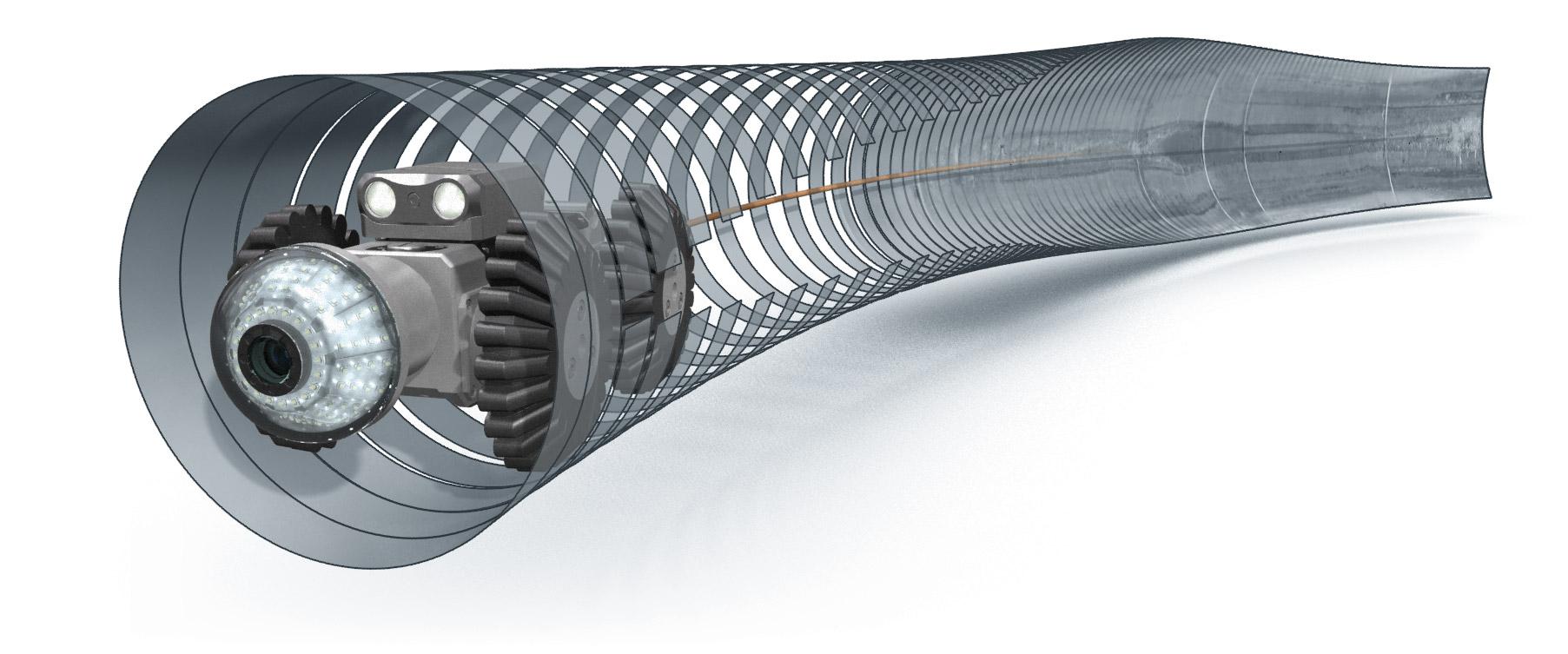Beneath our feet run miles and miles of pipes that carry our drinking water, our sewage, and even our nuclear wastewater. Every one of them is under constant attack from corrosion, root growth, cracks, leaks, clogs, collapses, and countless other hazards accompanying a life spent underground. And when pipes have problems, people have problems.
“If something’s going wrong underground,” says Mike Russin, “it’s only a matter of time before it comes up to the surface.”
Russin is the business manager for Pipeline Analytics, a software company that helps municipalities identify pipe problems before they can lead to disasters like flooding, contaminated drinking water, environmental pollution, and civilization-gobbling sinkholes. (The chasm that crept up and stole a Florida man while he slept last month was geologic—not pipe-related—but it sure got people’s attention about the potential danger down below.) The problem is, pipes are pretty inaccessible. Even if someone wanted to play Shawshank Redemption for a living, many pipes are far too tiny for a human to squirt through. And that’s why we have sewer bots.
Like bomb removal and space exploration, sewer reconnaissance is an excellent job for robots and a whole industry has grown up around their unique services. EnviroSight is one such company in the fray. They provide a six-wheeled, remote-controlled, compact crawler that shoots down pipes like a dachshund after a badger. They call it Rovver X. Using a handheld computer with two thumb sticks and a touch screen, operators can control Rovvers at distances up to 1,000 feet. They can maneuver around obstacles and climb over debris—yeah, gross—all the while using lights and lasers to map, take measurements, and send back video footage.
And Rovvers are just one type of soldier in the underground fleet. Like with Transformers, there are different makes and models for every application. SuperVision specializes in intersecting pipes. It can travel down a six-inch pipe the length of a football field, then extend a camera another 100 feet down smaller pipes that branch out to the right or left. Another one, JetScan, investigates clogged pipes and moves forward using water-jet propulsion.
No less interesting are the data collecting devices on any given robo-rat. Frankly, the things are dressed to the nines. They have sensors for tilt, roll, height, pressure, and temperature. They have laser range finders to measure pipe diameter and check for warping or collapse. They have axial cameras, pan/tilt/zoom cameras, and DigiSewer side-scan cameras that can capture images at 70 feet per minute. That’s where Russin’s software, WinCan, comes in.
“WinCan lets you take info from pipelines and visualize it, analyze it, and then integrate that data into mapping systems,” Russin says. “WinCan and Rovvers—the two of them go together like cake and ice cream.”
OK, kind of a weird metaphor coming from a guy in the sewer reconnaissance industry, but then you probably shouldn’t second guess a guy who can make one of these pop out of your toilet.
Russin tells me pipe reconnaissance technology got its start as World War II came to a close. In addition to disrupting supply lines and leveling cities, bombs do a number on below-ground infrastructure. To rebuild, the Germans had to first figure out what was left. Early devices were no more than black and white pan/tilt cameras on sticks, but they gave birth to an industry.
The bad news? If there were alligators or ninja turtles down there, we’d have known about it long ago.
